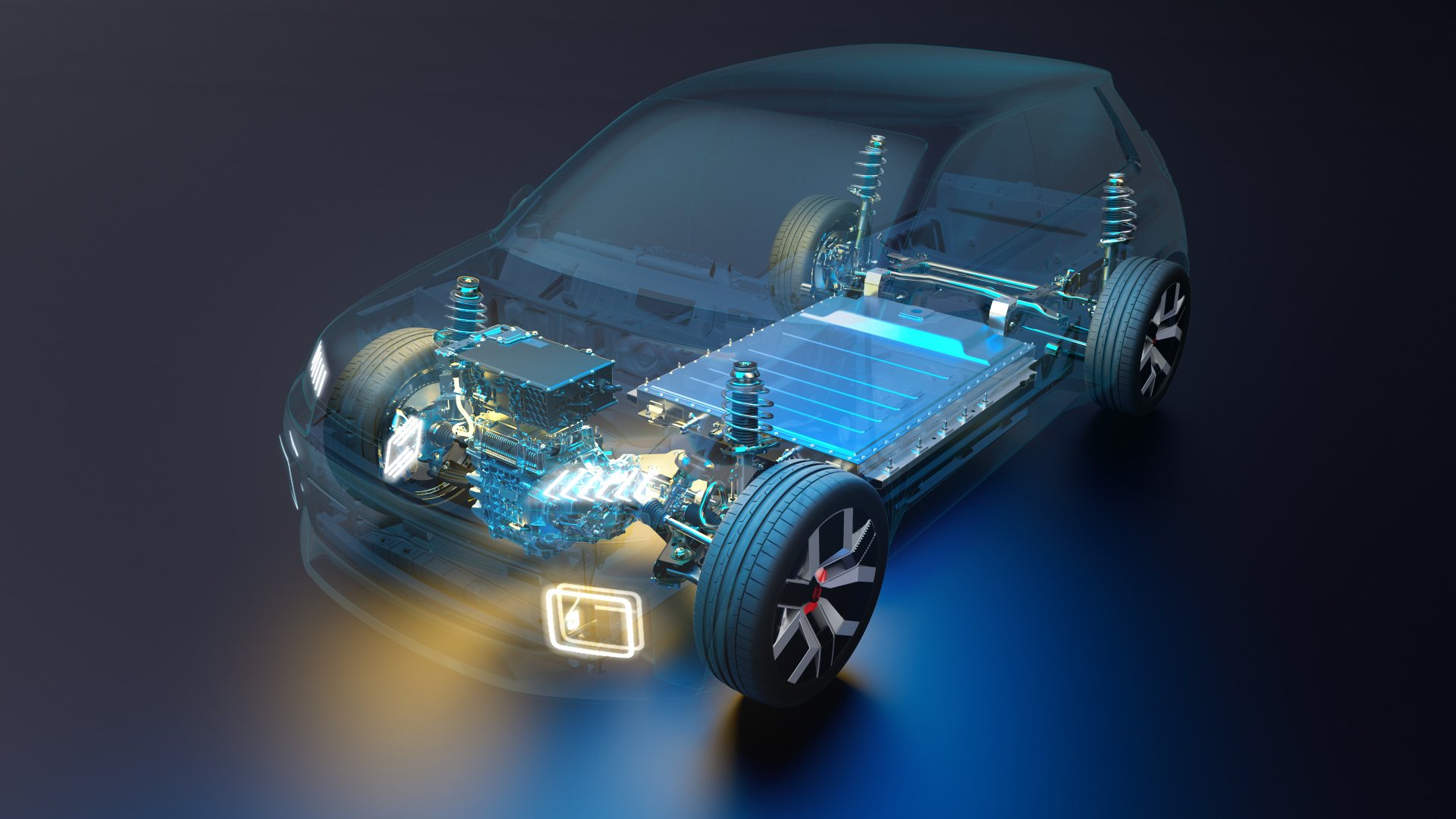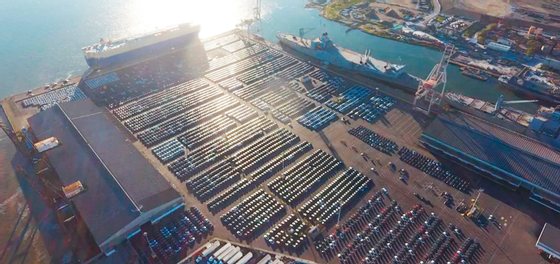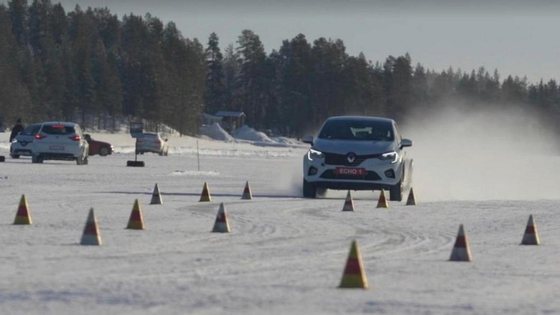Renault became a manufacturer much more ambitious with the decision to invest massively in electric vehicles. On the one hand, bet to rival Tesla in softwarewhich he considers decisive and, on the other hand, after offering the Zoe almost exclusively as his battery model for more than 10 years –the Twingo was never a very competitive alternative–, the French are now preparing to launch a complete and numerous range of electric vehicles, with the popular R5 being the first to arrive, already in 2024.
In addition to investing in the production of electric vehicles, Renault is once again following in Tesla’s footsteps in this field, controlling the entire production process be able to optimize technology, betting on specific platforms, production of motors and cells for batteries, as well as software, which implies greater investments, to later guarantee lower costs and more interesting profit margins. That is why Renault foresees a price of €25,000 for the R5, a very competitive value for a utility similar to the 4-meter Zoe, especially if it is equipped with a battery with an interesting capacity and autonomy to match.
R5 cheaper than Zoe and with new motor and battery
Proposed for around €25,000, still guaranteeing the desirable profit margin, the new R5, which takes the name and shapes of the last Super 5 to be produced in Portugal, uses a specific platform for battery vehicles. We are talking about the CMF-B EV, the basis of the Renault-Nissan-Mitsubishi Alliance, but adapted to segment B vehicles, traditionally called utility vehicles, about 4 meters long. But the new platform is also one of the strengths of the R5, since it is 30% cheaper to manufacture than the current one Zoe uses.
Despite claiming to be one of the most accessible trams on the market -they will even be the first trams in this price range, without concessions on power or autonomy-, there is nothing in R5 to show that cost control has compromised the adoption of more sophisticated or efficient solutions. Examples are not lacking, from the type of suspension used to the option of new generation engines, going through different and better batteries.

The motors of the R5, similar to those of the Mégane, are of the electrically excited synchronous type, a technological solution that associates the advantage of being more energy efficient with the fact that it does not need rare earths (used in the manufacture of magnets), which reduces costs and avoids dependence on countries like China. The first version of this new engine will be the ePT100kW, which, as its name suggests, provides 100 kW, that is, 136 HP, become more efficient by taking advantage of new “3 in 1” internal architecture, by concentrating the charger, the management unit and the inverter/converter in a single unit. With this system, The R5’s engine will be 20kg lighter and “economical” than the Zoe’s.
If the engines are produced by Renault (together with its partners Valeo and Valeo Siemens eAutomotive), the batteries and the respective cells are also made by the French, remaining however true to NCM chemistry (nickel-cobalt-manganese), the best current solution for those seeking energy efficiency. The cells are arranged in the pack in larger groups, leading to the creation of just four modules, instead of the previous 12, making management and cooling easier, all thanks to a simpler architecture than allows you to gain 15 kg compared to pack Zoe’s Batterieswith similar capacity.
As important as the other solutions found to reduce costs, Renault also decided to adopt ways to reduce the time needed to make each model, something that Volkswagen (when it was led by former CEO Herbert Diess) had already pointed to as the future, recalling that Tesla it takes just 10 hours to build a Model 3 in Germany, while VW needs 30 hours to build an ID.3 in Zwickau. The French announce that they have also worked to reduce production time, as a way of reducing production costs.

A comfortable, agile and fun-to-drive SUV
If we analyze the chassis of the R5 with a magnifying glass, there are no solutions that sacrifice efficiency to be more economical. The aforementioned CMF-B EV platform uses about 70% of Clio and Captur chassis parts, which allowed to reduce the already announced costs of the “base” model by 30%. But instead of mounting a semi-rigid rear axle, as is the case with Renaults of this caliber, or a rigid one, as is the case with electric competitors of this size from Stellantis, the R5 will mount a multi-link rear axle. At a glance, it improves the comfort and efficiency of behavior, being a more expensive option, but necessary to guarantee that “fun behavior” that the brand promises.
After equipping the R5 with more elaborate suspensions, Renault tried to reinforce the investment in its development. Thus, and even before the R5 was ready, the new suspensions were mounted on mules – a designation given to the test cars – to test the new arguments on the most varied types of surfaces. Development started in Lapland, in northern Sweden, where snow and ice are a constant, on roads with lower grip levels.

Subsequently, the mules headed to the Renault technical centers in Lardy, near Paris, and Aubevoye, in Normandy, where the most frequent constant is dry asphalt. This is for the R5 to cater to those looking for a sportier ride, which is important as the model will also be entitled to a sportier versionalbeit with an Alpine badge (the Alpine A290). The test program will end this summer in Andalusia, in the south of Spain, under high temperatures, here to also evaluate the behavior of the batteries in strong heat.
Powers of 125 and 150 hp, batteries of 42 and 52 kWh
The manufacturer has not yet publicly announced the data regarding the power of the engines that will be installed in the R5, as well as the capacity of the battery or the respective autonomy. But the French press, traditionally well informed on everything that concerns local builders, advances that The ePT100 kW engine will have versions whose power will vary between 125 HP and 150 HPnormal values for cars 4 meters long.
You packages The battery packs will also offer two capacities. The smallest, to be more accessible, should have 42 kWh, a value similar to the cheapest Zoe. But everything indicates that the most demanding drivers will be able to opt for another more generous battery, whose capacity will rise to 52 kWh, always according to French information organizations. This will allow advertising an autonomy of up to 420 km for the big batteryso that the little ones guarantee more than 300 km between recharges.
These two engines and two batteries allow Renault to launch four different versions, obviously with different prices. The €25,000 should correspond to the R5 with less power and less autonomyfor the version with more energy storage capacity and more engine power it is close to €30,000.
Source: Observadora



